Broad and Snyder
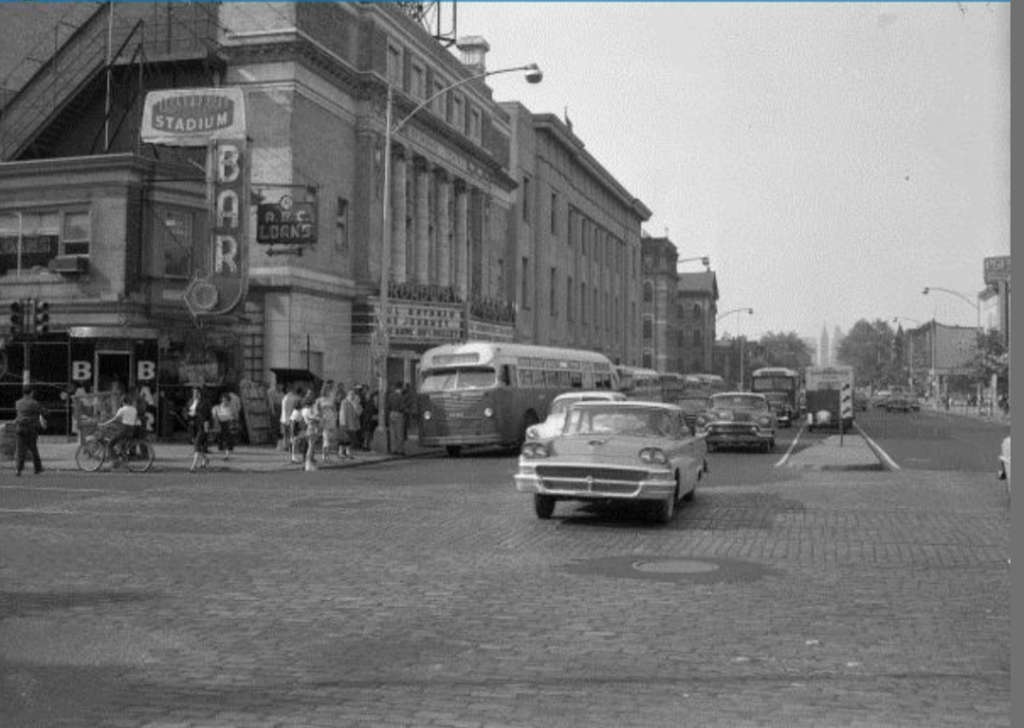
To entertain me, my son Stephen scours the Internet to find old photographs depicting neighborhood scenes of my childhood. Broad Street at Snyder Avenue was an important hub. Snyder Avenue was then the subway’s southern end of the Line, which runs north and south on Broad for miles. Later the subway was extended farther south, to afford access to the new sports stadiums and to the Navy Yard on the Delaware River, William Penn’s old boundary.
Broad Street is really 14th Street in the city grid. We lived on 17th. For three years I walked daily to Southern High School which was on Broad and Jackson streets. Then, for four years, I attended Temple University, a forty-five minute subway ride to Broad and Susquehanna. Temple was surrounded by a vast slum, not dangerous just poor.
Looking north in the photo, the first tall building on the left is the Broadway movie theater. It was large and stately, suitable for Saturday night dates.
Next door was the Electric Company. Once a month, on a Saturday morning, my father walked to the Electric Company to pay the bill, cash on the barrelhead. We didn’t have a checking account, few working people did. After Electric came the Telephone company which was a block farther north, and finally, four blocks north, at Broad and Tasker Street, the gas company.
These transactions were social encounters among paisanos. Everyone liked Whitey Perrone, whose hair had turned white in his mid-thirties. He was a good listener. His itinerary included Giovani’s barber shop, a sure stop even if he didn’t need a haircut. Giovanni was a paisano, my mother’s relative.
Tricycle
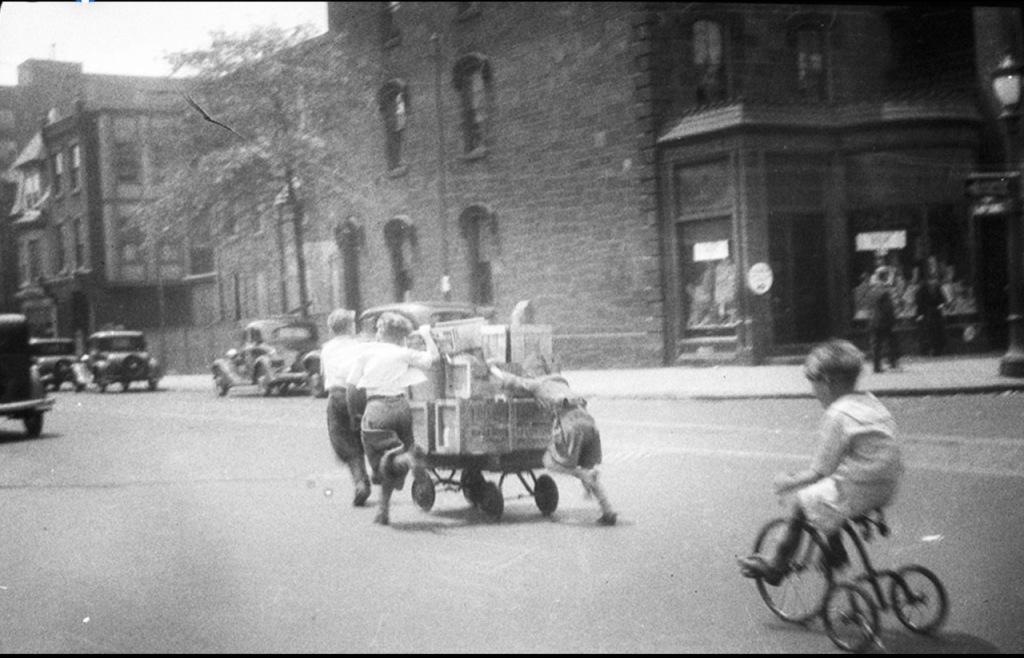
I remember that trike. I was riding it when Spike, my brother Steve’s friend gave me a big push from behind. My foot flew off the pedal right into the wheel’s spinning spokes: SNAP! My leg broke with a sound heard all the way to Fifth Street. They rushed me to the Mt. Sinai Hospital emergency ward where I was well known. Please, I’d say, no white bandage, and no red medicine so my mother won’t notice. I was old enough to wash myself by then.
This time I end up with a cast from my hip to my toes. Everybody in the neighborhood signed it, and some strangers too. Of course Spike signed it: “Get well soon Chaps!” Weeks and weeks later, when they removed the cast, my leg looked like a giant white larva. I wish I had kept that cast which was covered with graffiti, like an Egyptian sarcophagus, but I think it was whisked away to some museum. Years later when I looked into it, I found a large empty lot where the hospital had been.
St. Agnes Hospital

I was never an overnight patient at St. Agnes. In old age if my father didn’t feel well, without telling my sleeping mother, he would walk the three blocks to hospital and check himself in through the Emergency ward. My mother was terrified the first time it happened, until they found him comfortably ensconced in a side bedroom of the Emergency Room. It soon became routine: The nuns were very kind. Several of of them knew a little bit of Italian.
Once when Jimmy, their diabetic next door neighbor entered the hospital for a week or so, Jimmy’s wife would visit, carrying a large handbag secretly enclosing Jimmy’s beloved little dog, who would jump out and snuggle under the covers. The dog’s presence soon became an open secret. In short, Saint Agnes hospital was a very humane place. The sidewalk fronting St. Agnes was a good place to watch the New Year’s parade because all the string bands and the ornate dress-acts paused to do their thing for the patients, nurses, aides who crowded the windows of the hospital.
Inside, the hallway wooden floors were grooved and highly polished by years of foot traffic. The windows were tall and let in lots of light and were difficult to clean. It was a worn, humane place – like some of the old hospitals I knew in 1955 Italy. Ultimately, St. Agnes could not compete with the bigger, modern Methodist Hospital a few blocks away. St. Agnes became a rehabilitation facility. It lasted a few years before closing. I don’t know what it is now, perhaps a plaything of the real estate market. The market always trumps humanity.
Fireplugs
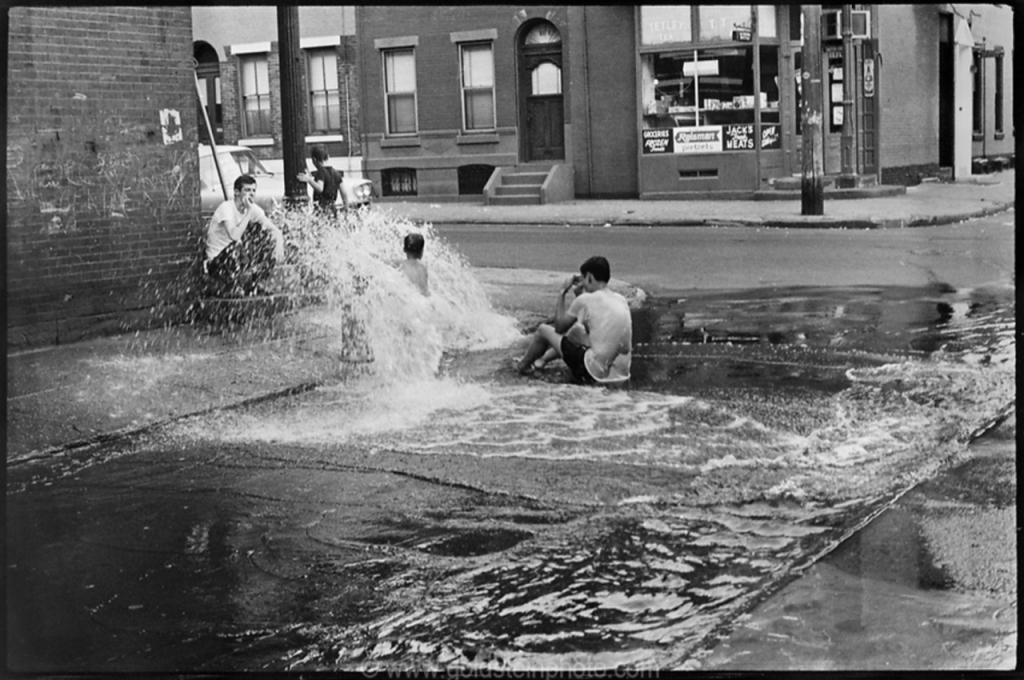
Most city blocks had corner fire hydrants which we called “fireplugs” or plugs. The plugs had collars over the on-off valve to discourage the public from turning on the fireplug on, and wasting water. And a turned-on plug depleted the water pressure in the system, pressure which was needed when firemen had to direct powerful streams toward upper storey fires. Still, most blocks had someone who could turn on the plug.
A really hot day would call forth the neighbor who had the wrench. He’d turn on the plug and he’d crouch, with his back toward the gushing water. Like placing his thumb over the spout of a gushing hose, the neighbor would instead press a buttock against the water surging from the plug, seeking to block its flow, Impossible! but the effort sent a riotous shower of water over the street. Sometimes it reached the opposing sidewalk, to the dismay or delight of people standing there. We kids would play under the dripping arc of cool water. It was heavenly. “Jiggy, the cops!” We would scatter. Within seconds a red car would turn into our glistening street. The cops would turn off the plug.
Southern High School

The half-windows along the sidewalk looked down into the Industrial Arts shops: Plumbing, Electrical, Machine(with giant lathes), a small foundry(!) for welders etc. We lost the entire industrial arts program when they built Bok Vocational High School on 8th and Mifflin. What a shame to lose those guys, just after my time. The school no longer represented what was out there.
Inside the front door was the broad staircase of the School upon whose height stood Mr. Nelson, the Physics teacher, on that terrible snowy day in my freshman year. “Congratulations, Perrone,” he said, shaking my hand, “You’re the only boy who’s showed up.” A few others straggled in as the morning progressed.
The basketball gym was under the peaked roof where there was barely enough room for an arching set shot. Students and fans had to climb four flights to get there. Nobody complained.
The class rooms were tall with ornately embossed metal ceilings. The windows were tall and we opened them on the hot days of Spring and Fall. We lined those windows the day the big, open car drove by bearing FDR and Mrs. Roosevelt returning from the Navy Yard where they had baptized a new battleship. He smiled famously and waved his arm.
The stately granite building was replaced by a yellow brick one whose first floor windows are barred. The front door and the exits are guarded.
TastyKake
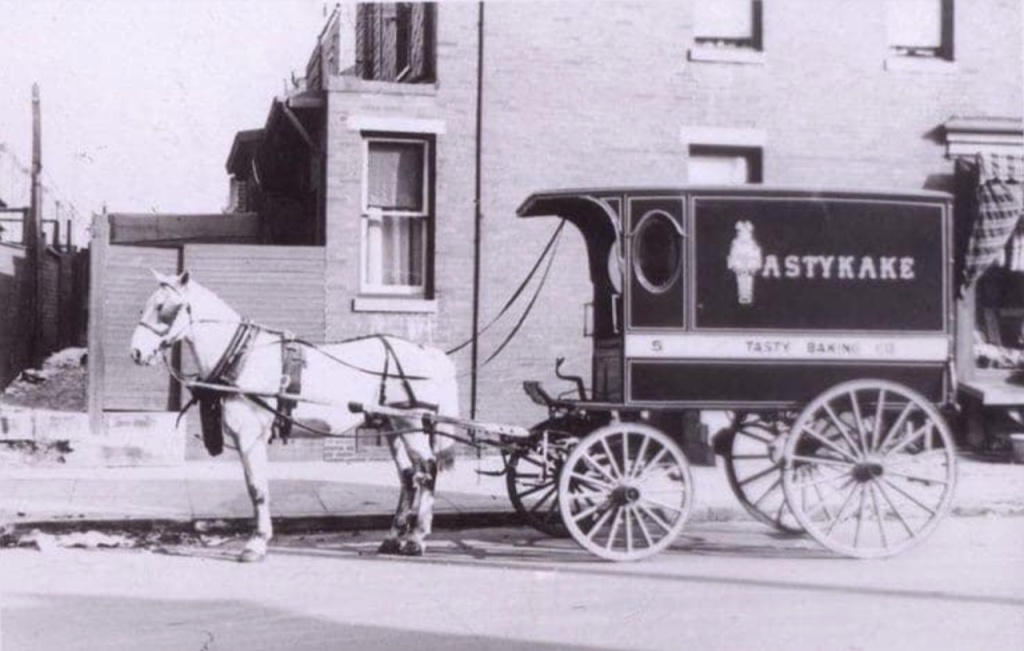
I worked for TastyKake one summer. Their factory was in South Philly, just off Passyunk Ave, near Tasker street, I think… I, and another, collected with a handtruck the returned stale products that had not been sold in the days, the week, before, from across the whole city. A large mound – a small truck load. I would take this stuff to a first machine that removed the paper wrapping. Next to what looked like a giant tub with revolving paddles that ground the cakes to a rough consistency. Thence to another large tub where the the stale cake “flour” was mixed with gallons of chocolate syrup.. This was mixed to a kind of dough which then filled hundreds of cake pans on a slowly moving belt, which slowly moved through the ovens. What emerged were the famous TastyKake Chocolate cupcakes which were popular everywhere.
Linton’s Restaurant
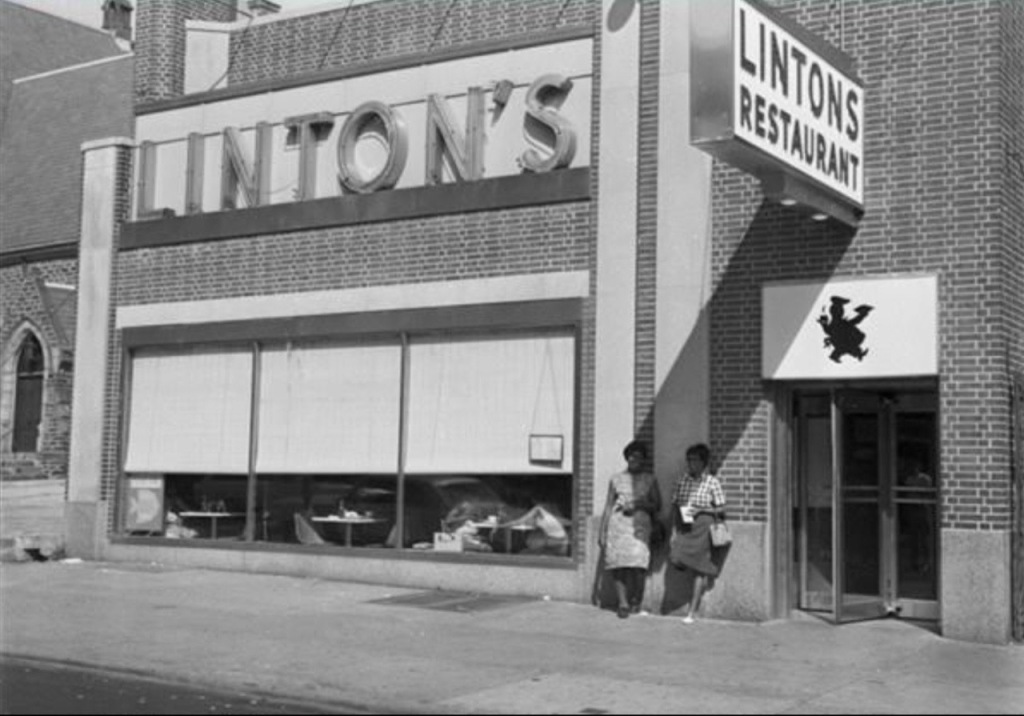
I ate at Linton’s many times, after the college games at Convention Hall. One was located on Snyder Ave. around 23rd St. Linton, or the owners of Linton’s, were Philadelphia Quakers whose children attended Friends’ Central during mother’s tenure. They were much smaller than Horn and Hardarts. I preferred the food there.
My notorious friend Billy Nugent ate there frequently with poor Ray. Nugent would have a full meal and he would buy Ray a cup of coffee. When they got to the cashier, Nugent would hide his bill and pay only for a cup coffee saying Ray had had nothing to eat. After a few weeks of this, Linton had a plainclothes cop waiting at the cash register who searched Nugent and found the true bill in his pocket.
Linton, Quakers that they were, made a deal: no jail for Nugent if he agreed never to enter a Linton’s Restaurant again. Of course, Nugent agreed. Linton’s went out of business a few years later.
Photos courtesy of the “Vintage Photos of Philadelphia” Facebook group. Most of them are from the Temple University archives.
LikeLike